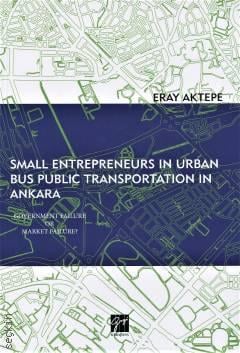>
Ekonomi, İşletme Kitapları>
İşletme>
Girişimcilik, Küçük İşletme>
Small Entrepreneurs in Urban Bus Public Transportation in Ankara

Small Entrepreneurs in Urban Bus Public Transportation in Ankara
1. Baskı,
Eylül 2020
Kitabın Detayları
Dili:
İngilizce
Ebat:
16x24
Sayfa Sayısı:
185
Kitabın Fiyatı:
175,00₺
Temin süresi 2-3 gündür.
Kitabın Açıklaması
This book is, in a sense, the embodiment of both quantitative and quali-tative results related to urban transport decision making processes that emerge after the challenging and long-term thesis doctoral education process. Context of the book mainly focuses on shovving how private urban transport entrepre-neurs fiil the urban transportation service gap created by local governments, which cannot provide services against the rapidly grovving and concentrated population in cities, and then have a priority status. Besides that, the context shed lights on how private urban transport entrepreneurs produce and distrib-ute transport rent through different transport models and mechanisms in dif-ferent regions of the city. The book also tends to make a contribution to our knovvledge of the fıeld by explaining the historical and successive state and market failures in the provision of urban public transport services and how private urban entrepreneurs are involved in the urban decision-making mech-anism, under the influence of the regulations enacted.
Kitabın Konu Başlıkları

Introduction : Research Issues and Strayegy

Methodology and Reseach Design

Theoretical Discussion

Historical Context of Urban Transportation in Ankara

Empirical Findings

Conclusion
Kitapla İlgili Kategoriler
Hakkımızda
|
Uluslararası Yayınevi Belgesi|
Kaynakça Dosyası|
Kişisel Verilerin Korunması |
Üyelik|
Siparişlerim|
İade Politikası|
İletişim


